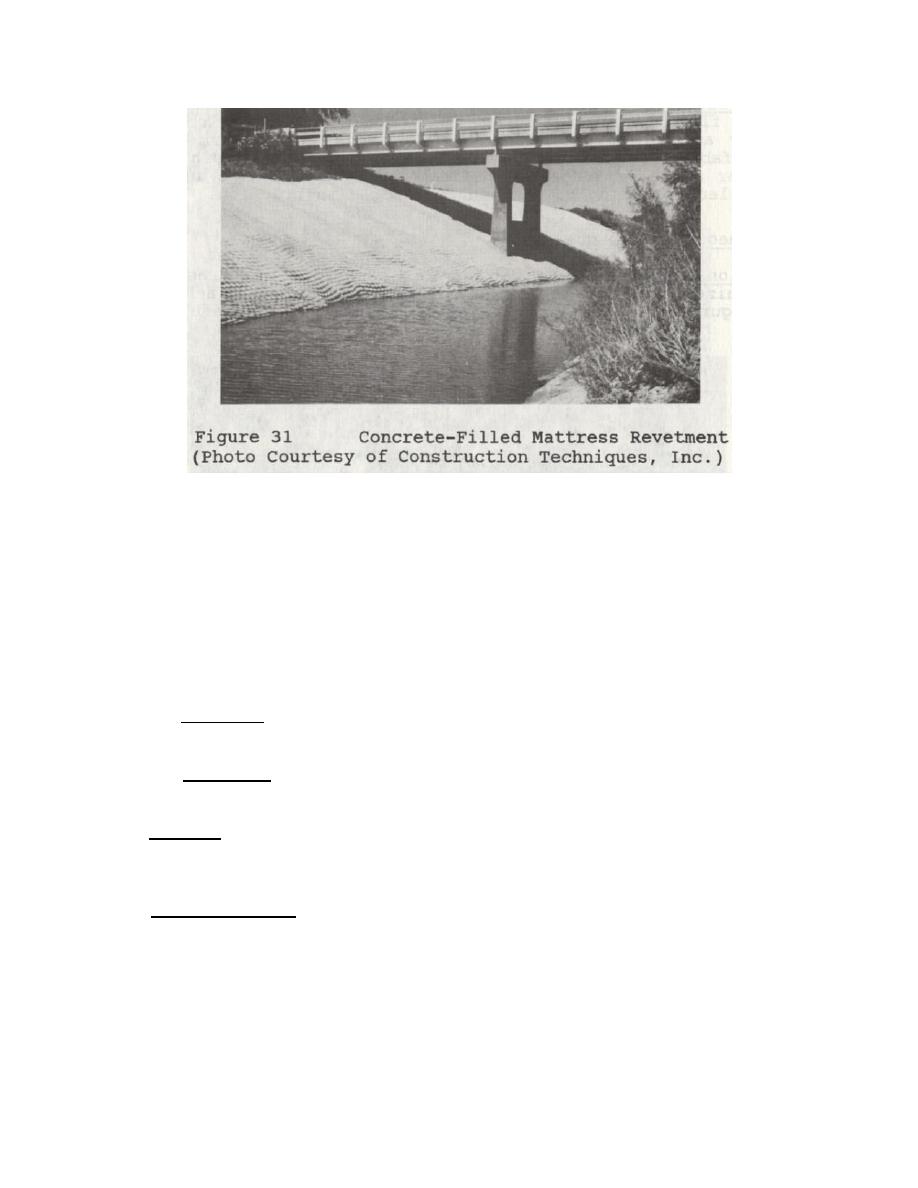
Bags or mattresses should only be placed on a stable slope. While a stacked bag revetment can
be placed on a steeper slope than a mattress, it should not exceed 1 vertical on 1.5 horizontal. Fill
materials beneath the revetment should be uniform and well compacted and an adequate filter system
should be provided. Some form of toe protection is usually required, or the toe should be buried well
below the anticipated scour depth. A stacked bag revetment should be at least 2 bags thick, preferably
outside layer concrete-filled, but the inner layer sand-filled. When sand is used as filler material, the
fabric and its seams must be nondegradable (ultraviolet resistant). However, where vandalism or water-
borne debris is likely, only concrete-filled units should be used. As with concrete block revetments, the
structure's integrity depends on the stability of the individual units. Once units are lost or damaged, or
settle unevenly, the structure loses its strength.
Burlap Bags. Burlap bags are recommended only when filled with concrete-because of their
rapid deterioration and the ease with which they can be torn.
Sand Pillows. Sand Pillows are ultraviolet-resistant bags made from woven acrylic fabric.
They weigh approximately 100 pounds when filled.
Dura Baqs. Dura bags are large (4 x 12 x 1.7 feet) and must be fi1led in place with a pumped-
sand slurry or concrete. Their large size makes them more resistant to movement under wave attack.
Fabricated of ultraviolet-resistant material, they can be used in exposed installations.
Fabriform Nylon Mat. Fabriform is designed to be filled with a highly fluid mixture. The exterior
cloth envelope serves primarily as a form until the grout hardens. Fabriform comes in several fabric
styles, including some with filter points (weep holes) for slope drainage. Fabriform mats are patented
and should be installed according to the manufacturer's instructions.
40



 Previous Page
Previous Page
